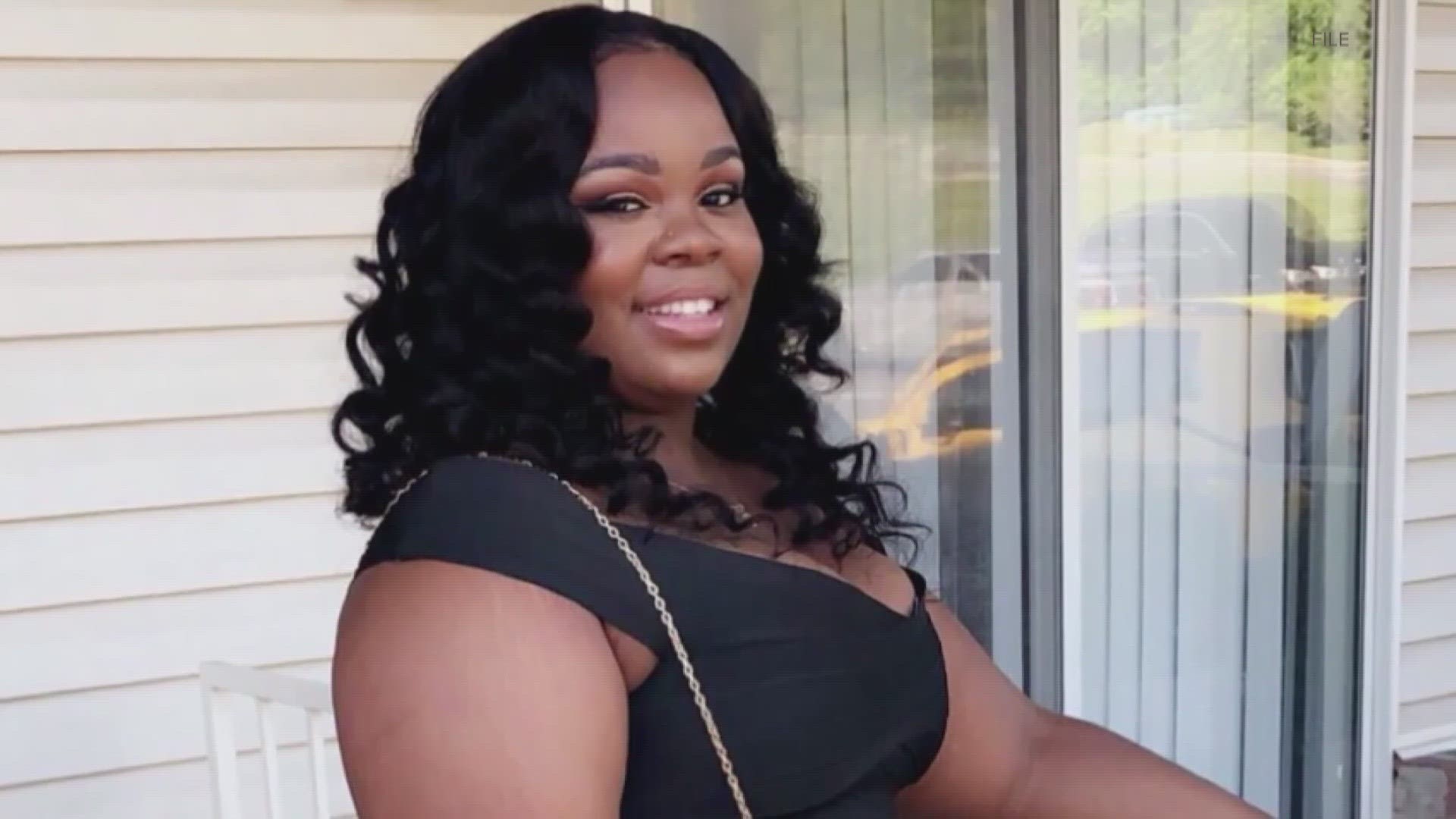LOUISVILLE, Ky. — Attorneys have finished testimony in the federal civil rights trial of former Louisville Metro Police Officer Brett Hankison.
The 12-person jury was deadlocked on both counts if Hankison used excessive force and violated the civil rights of Breonna Taylor, her boyfriend and their neighbors the night of a botched raid at Taylor's apartment in 2020. Because of this, Judge Rebecca Grady-Jennings declared a mistrial.
The trial marks the second attempt by prosecutors to convict Hankison for his actions on the night Taylor, a 26-year-old Black woman, was shot to death by police after they knocked down the door of her apartment.
Last year, Hankison was acquitted on multiple wanton endangerment charges in a state trial.
This story will be updated each day of the trial. Stay tuned for frequent updates.
DAY 10: Thursday, November 16
It's day four of jury deliberations in the Brett Hankison trial and the jury is deadlocked on both counts.
Jurors sent a note to Judge Rebecca Grady-Jennings saying some have concluded deliberating. They feel they cannot honestly and reasonably reach a verdict.
The judge doesn’t think issuing another Allen charge is necessary.
"The totality of the circumstances may be beyond repair in this case,” Grady-Jennings said.
Prosecutors wanted the jurors to continue deliberations; however, the defense disagreed. The judge said she wasn't going to issue a second Allen charge, and sent the jurors a note back asking them if they are deadlock on both charges or if they can each a verdict on one. The jury ultimately deadlocked on both counts.
Judge Grady-Jennings called the jury in to question their foreperson who confirmed the deadlock. The judge then declared a mistrial.
Earlier in the day, jurors sent a note to the judge saying, “We are at an impasse in deciding this case. What is the process if we cannot come to a decision?”
In response, the judge issued an Allen charge. This means she is urging the jurors to continue deliberating until a verdict is reached.
According to University of Louisville law professor, Sam Marcosson, the number of Allen charges allowed during a federal trial is up to the discretion of the judge -- especially if neither party objects. Marcosson said if one party objects and moves for a mistrial, then the judge risks the verdict being overturned because the defendant argues she “forced” the jury into a decision.
Before sending the letter, the jury asked for the courts’ transcripts, but they didn’t ask for a specific testimony. Attorneys and the judge instructed them to rely on their memory.
However, after learning of the deadlock, prosecutors felt it was fine to provide the jury with records.
The judge ultimately decided not to, instructing them to discuss the case further.
The jury is made up of six men and six women, only one is black. This was the first time we’ve seen the group since deliberations began.
WHAS11's Alexis Jones is at the courthouse waiting for the jury's final decision.
DAY 9: Wednesday, November 15
It's day three of jury deliberations in the Brett Hankison trial, and so far, there is still no verdict.
The former LMPD officer is charged with two civil rights violations for shooting into the apartments of Breonna Taylor and her neighbor in March 2020.
Prosecutors argue Hankison fired blindly into the homes and never actually identified a target. While Hankison's attorneys said he was trying to save his fellow officers by firing at what he thought were muzzle flashes.
WHAS11's Alexis Jones is at the courthouse waiting for the jury's final decision.
DAY 8: Tuesday, November 14
After spending an entire day inside the courthouse, the jury has yet to reach a verdict and have wrapped up their second day of deliberations.
Court records show the jury arrived for deliberations at 9 a.m. on Tuesday. Jurors were handed the case Monday evening, but decided to end after almost an hour and a half behind closed doors.
On Tuesday, attorneys from both side and Judge Rebecca Grady-Jennings came into the courtroom to discuss a question from the jurors. The jury asked: "When deliberating unreasonable force, does the law allow us to separate the level of force used from the manner in which the force was applied?"
Judge Jennings instructed them to evaluate the jury instructions for each element individually.
Jennings and attorneys returned again around 4:30 p.m., but spoke under headsets before leaving for the day.
The jury will continue deliberating on Wednesday.
DAY 7: Monday, November 13
As of Monday evening, this case is now in the hands of the jury. Judge Rebecca Grady Jennings read instructions after both sides rested.
Prosecutors continued questioning Hankison Monday about what justifies deadly force. They asked him about "target identification" and keeping your eyes on the target, which has been brought up during other testimonies.
Hankison responded that it’s a “case by case situation” and he can’t answer without full details.
The prosecution also went over Jefferson County’s firearm standards, which Hankison initialed. One page states deadly force may not be used in some situations if innocent bystanders are present.
Prosecutors showed pictures of Breonna Taylor’s sliding door and bedroom window. They asked Hankison if he could see a "person, a shadow or an outline of a person."
Hankison responded, “I could not."
He said he knew the threat was walking up the hallway, claiming he saw muzzle flashes in the side door from where he was standing on the sidewalk. However, prosecutors said his shell casings weren't found next to the apartment building, and instead were found behind a gray truck in the parking lot.
Hankison said he knows now the gunfire was coming from the officers in the doorway, but at the time was under the impression that his fellow officers were being executed.
Defense Attorney Stu Mathews says Hankison “returned fire to muzzle flashes,” and he knew his partner was shot. He added Hankison’s perception is what’s important.
Mathews told the jury they need to put themselves in the position of a reasonable officer in that situation.
He says Hankison made a split decision to protect his brother officers.
The prosecution also accused the former officer of lying on the stand, saying Hankison shot 10 rounds after the gunfire ended at the doorway. Prosecutors referenced testimony from former Sergeant John Mattingly and Breonna Taylor's neighbor, saying both heard a short break in the gunfire.
But his defense argued the prosecutors took those statements out of context and made conclusions unsupported by evidence.
The jury wrapped up deliberations in Hankison’s federal trial just before 6:20 p.m. and will reconvene Tuesday morning.
DAY 6: Thursday, November 9
Brett Hankison emotionally took the stand on Thursday, sharing what led to his actions on Springfield Drive. He said he was clocked out the night of the raid, but volunteered to help execute the warrant at Breonna Taylor's apartment.
Similar to other testimonies, Hankison said he and other officers knocked and announced their presence at Taylor's door, but no on answered.
That's when they rammed through the door and Hankison said he saw a muzzle flash revealing a man in a "rifle stance."
Hankison said he immediately ran towards the parking lot but before reaching the stairway he heard his friend, and former LMPD sergeant, John Mattingly yell he was hit by a bullet.

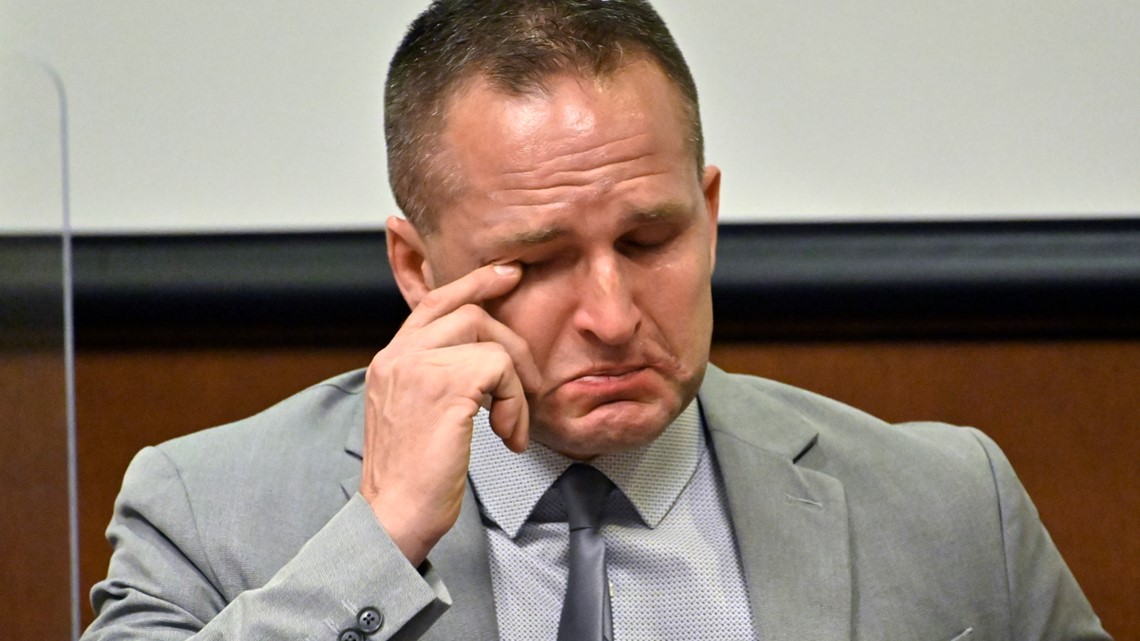
Mattingly, also taking the stand on Thursday, said he saw Kenneth Walker holding a handgun, not a rifle.
Hankison said there was so much gunfire, he thought officers were trapped in the breezeway, taking fire from an automatic weapon. He said he isolated the target, saw muzzle flashes in Taylor's sliding door, and fired five rounds inside. He then fired another five rounds through a bedroom window.
"I had no choice but to react," Hankison testified, fighting back tears.
Hankison admitted he wasn't thinking about police protocols at the time, but said he was "thinking about surviving and getting my fellow officers out of the breezeway."
During the cross examination, prosecutors circled back to LMPD's policies, which Hankison responded: "Unfortunately, Mr. Walker chose deadly force."

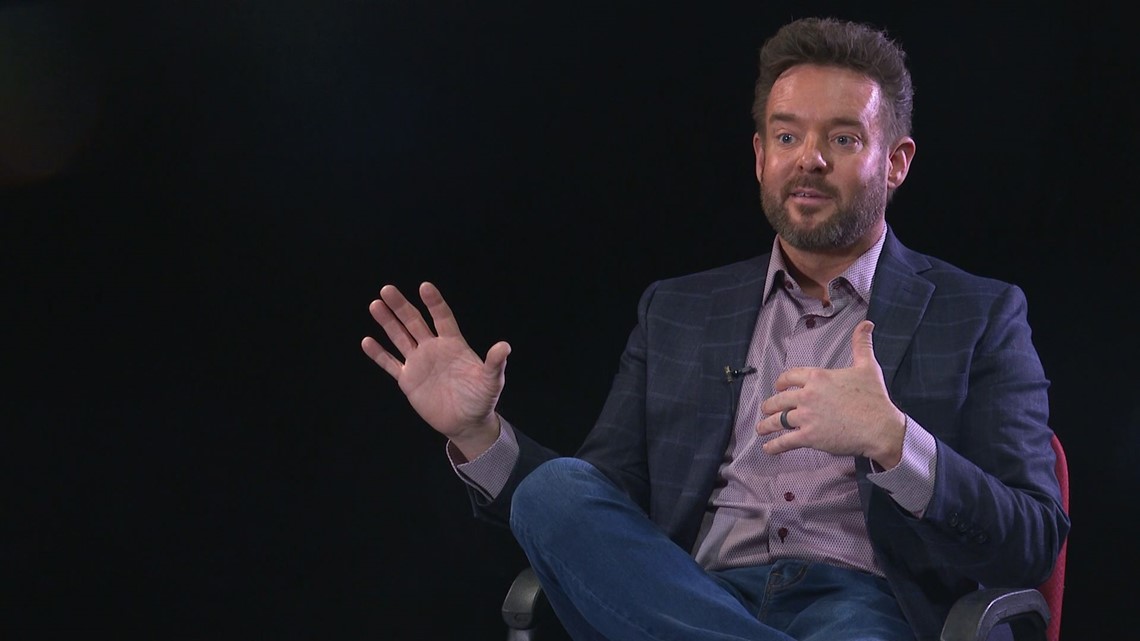
Afterwards, the defense addressed the allegations that Hankison was boasting after the shooting. Hankison said he was pointing and touched his chest to let SWAT officers know he fired through the window.
He went on to say that he feels horrible about that night.
"So many people have experienced hardship because of this warrant they never should have served," he said.
Court has wrapped up for the week and will begin again on Monday with closing statements.
DAY 5: Wednesday, November 8
Court proceedings began Wednesday with the jury visiting Breonna Taylor's apartment.
This request had been made by Hankison's defense so the jury could see his point of view and give them a better understanding of the evidence.
Once back in the courtroom, former LMPD SWAT Commander Dale Massey testified it's important for officers to identify a target when using deadly force because "you don't want to take an innocent person's life."

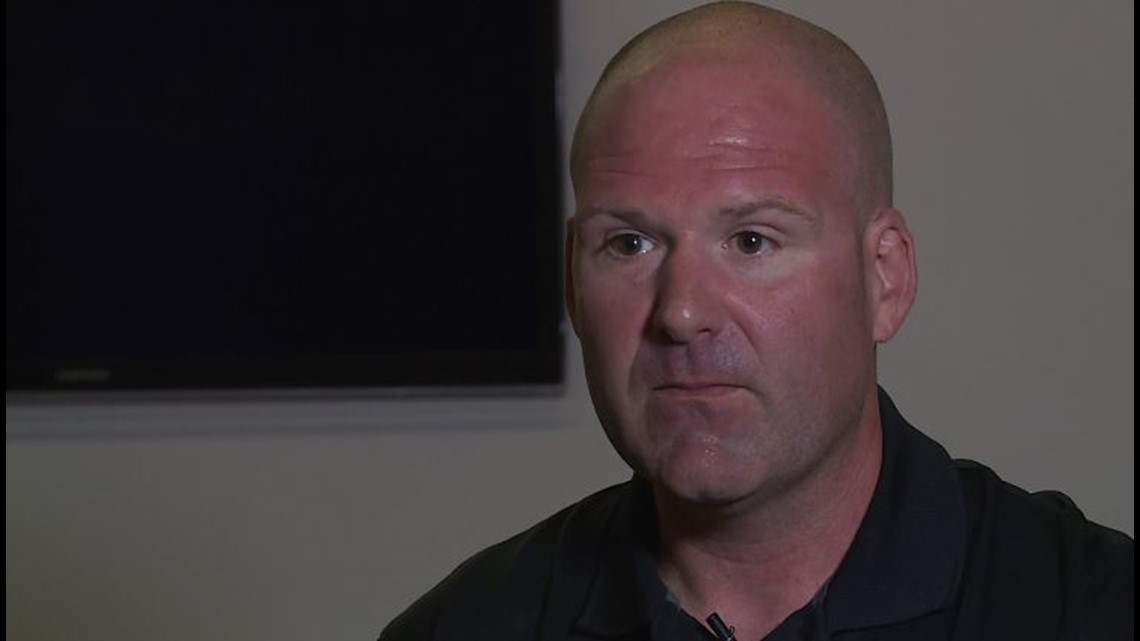
When he arrived at Taylor's apartment after the shooting, Massey said former LMPD Detective Myles Cosgrove was the calmest person on the scene that morning.
Similar to another officer's testimony, Massey said he saw Hankison "tapping his chest" and pointing at the window, as if he was "taking credit" for the bullet holes.
When he learned officers had shot through the window and sliding door, he was in "complete and utter shock and disbelief" because he couldn't see through Taylor's covered window or sliding door. He said shooting blindly violates LMPD's police training.
"You can't shoot at what you can't see," he said.

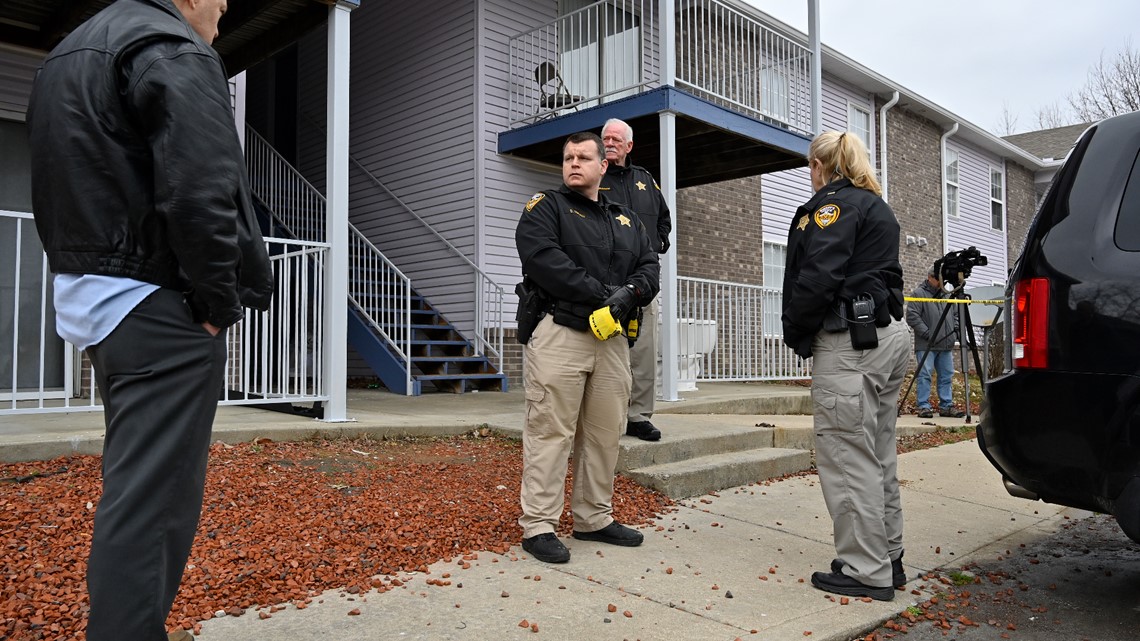
The defense argued that Hankison had a line of sigh through the gaps of the window and fired at the sound of a rifle.
Hankison's defense called their first witness to the stand Wednesday, Officer Mike Nobles, who was there the morning of the raid, and agreed that the echo of gunfire sounded like a rifle. He said after Cosgrove returned fire in Taylor's doorway, he didn't hear anymore gunshots, which contradicts what prosecutors say happened.
During the prosecution's cross examination, Attorney Ana Gotfryd brought up prior statements Nobles made to the FBI. Gotfryd said Nobles told agents he was infuriated that Hankison blindly shot through the apartment.
FBI interviews also show Nobles said Hankison's actions made them look like "horrible cops and criminals."
DAY 4: Tuesday, November 7
The prosecution for Hanksion's civil rights trial continued with Cody Etherton, Breonna Taylor's neighbor. At the time of the raid, he was living with his pregnant girlfriend, Chelsea Napper, and her 5-year-old son.
He recalled how they were fast asleep when Hankison shot through their home. He woke up to a "loud boom" and immediately jumped to his feet. He said he could hear the walls shake, but not the voices of anyone, and had a gut feeling something was wrong.
Etherton said he made his way to the hallway to see what was happening in order to protect his family. While there, he heard rounds of gunfire. Bullets started flying through the wall, nearly missing him.
He started calling for Napper and told her to fall to the ground. During his testimony, Etherton broke down in tears and said all he could think about in that moment was her and their unborn son.
He recalled hearing a voice coming from next door saying "breathe, baby, breathe."
Etherton said he left his apartment to check Taylor’s home, but he couldn’t see inside because it was too dark. He and Napper then called 911 and told dispatchers how bullets were flying through the wall. Etherton said it hurt him to later learn an officer put his family in danger.
"[It] didn't feel real," he said in court. "If I took one more step, [the bullet] would have hit me.”
While on the stand, firearm examiner Michael Van Arsdale said he traced the bullet holes in the adjoining wall to Taylor’s window and sliding door. One of Arsdale’s graphics showed the bullets’ trajectory came from Hankison’s gun.

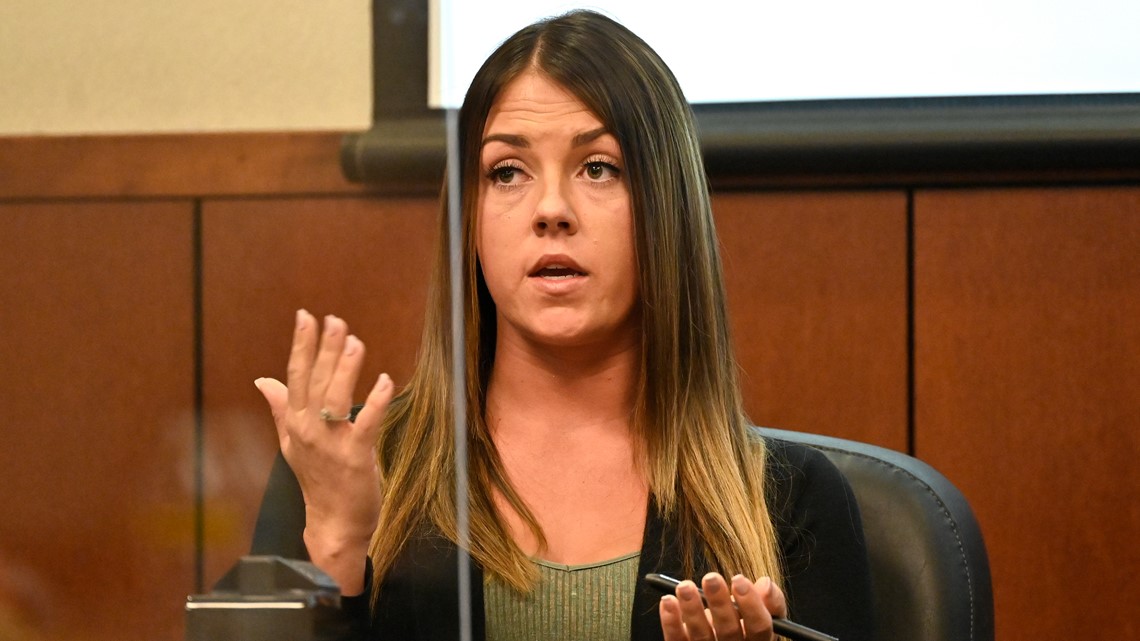
Etherton said March 13, 2020 still affects him. He's been diagnosed with PTSD and is in counseling to try and cope. He also has a pending lawsuit against the city.
Chris Kitchen was one of the responding officers that morning. Beforehand, he was serving narcotics warrants on Elliott Street, mainly to catch Taylor’s ex-boyfriend, Jamarcus Glover.
In court, Kitchen said he saw Hankison jumping and pointing at his chest after the shooting -- seemingly boasting about what was done. That’s when he said he learned an officer blindly shot through the side of the apartment building, making him sick.
While on the stand, former LMPD chief Steve Conrad said officers are taught, “you can’t shoot someone unless you see someone.” He then said before officers fire a weapon they need to think through what’s going to happen.
DAY 3: Monday, November 6
The prosecution began the second week of Hankison's civil rights trial with emotional testimony from Kenneth Walker, Breonna Taylor's boyfriend.
Walker broke down in tears in front of the jury as he relived the night of the raid at Taylor's apartment.
He recalled how the night before March 13, 2020 was like any other. The couple had grabbed dinner and drifted off to sleep in bed while watching a movie. Hours later, Walker said they heard three "aggressive bangs" at the door.
With each knock, Walker said they asked who was there, but no one answered. He grabbed his clothes and licensed handgun and walked toward the bedroom door, but before reaching the hallway, the apartment door burst open. He said it sounded like an explosion.
During his testimony, Walker doubled down on not hearing officers introduce themselves before kicking down Taylor's door, however the defense said otherwise.
Walker said he thought Taylor's ex-boyfriend was trying to break in, so he fired a shot toward the ground to scare him away.
That's when LMPD officers began returning fire in a barrage of bullets, Walker described it as like being in "war."
Walker said he tried pulling Taylor to the ground as bullets were coming through the windows and walls. He said he heard a painful scream coming from her and saw blood everywhere. Once the gunfire stopped, she was unresponsive.
During his testimony, federal prosecutors showed images of Taylor's body after the raid. Walker struggled to fight back tears.
He said after the shooting, he called his mom. She told him to call 911. During that call, Walker can be heard saying "someone kicked in the door and shot my girlfriend."
After speaking with dispatchers, Walker said he yelled for help several times and walked outside because he heard police. Walker said he was terrified when he saw officers had their guns drawn, pointed at him.

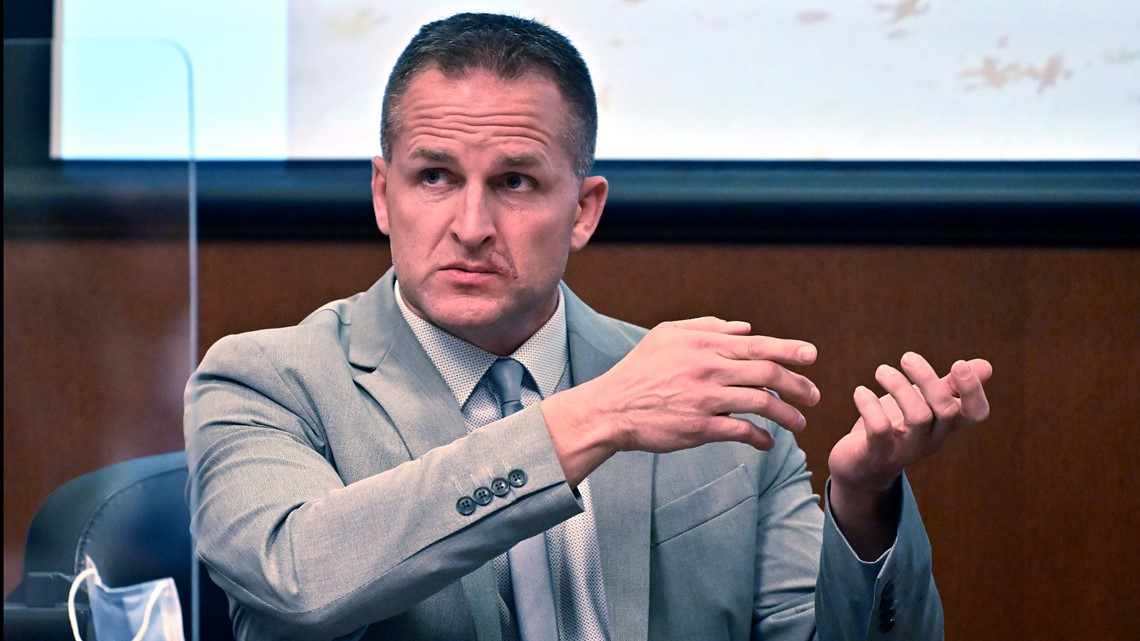
Defense attorney Stu Mathews then circled back to a point Walker made on the first day of the trial, that Hankison fired in response to the sound of a rifle, but Walker said there wasn't a rifle in the apartment that night.
Several forensic experts supported Walker, including LMPD Sergeant Jason Vance also testified there wasn't a rifle in the home that night, just one bullet casing matching Walker's handgun.
Forensic Specialist Steve Hughes testified 10 bullet casings found inside Taylor's home matched Hankison's pistol.
Mathews also showed footage of Walker being arrested and lying to officer, saying Taylor had fired the gun.
Walker testified one of the officers told him that it was "unfortunate" that he wasn't shot. He added that he lied so he wouldn't be killed, but later cleared Taylor's name at the police station.
Walker went on to share how heartbroken he's been since Taylor's death.
Last November, Walker received a $2 million settlement from the city after suing LMPD over the deadly raid. On Monday, he said he would trade it all back to bring her back.
The prosecution plans to finish calling witnesses by next Monday.
Hankison's trial is expected to last three weeks.
Make it easy to keep up-to-date with more stories like this. Download the WHAS11 News app now. For Apple or Android users.
Have a news tip? Email assign@whas11.com, visit our Facebook page or Twitter feed.

